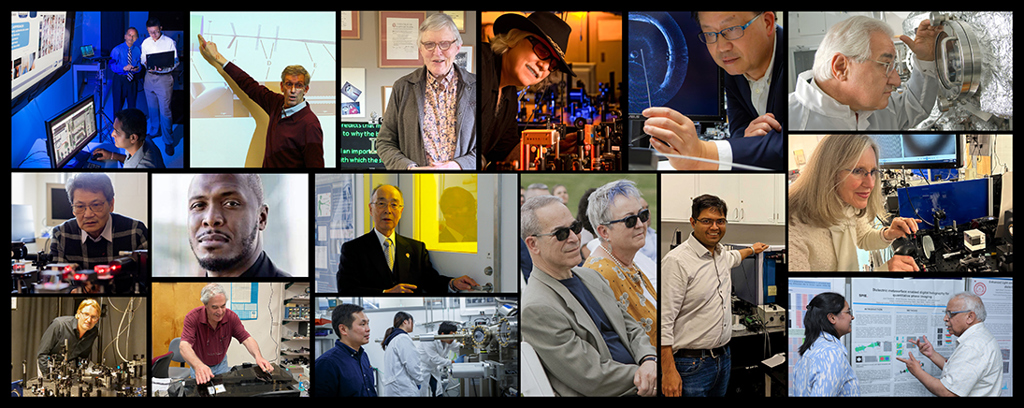FiO 2024 Honorees
Get Involved
FiO 2024 Honorees
Optica is proud to recognize the outstanding achievements of our community.
Thank you for joining us in congratulating the Honorary Members, Award/Medal winners and Fellows recognized during FiO.
Optica Honorary Members
The most distinguished of all Optica Member categories, Honorary Membership is awarded for unique, seminal contributions to the field of optics, and is confirmed by the Awards Council and Optica Board of Directors.

Sir Peter L. Knight
Imperial College London, UK
For remarkable and varied contributions to quantum optics, ranging from foundations to applications, and his unique combination of educational, organizational, and globally active leadership skills.
He is currently an Emeritus Professor in the Department of Physics, Imperial College London, UK; Chair of the UK National Quantum Technology Programme Strategic Advisory Board; and Chair of the National Physical Laboratory Quantum Metrology Institute.
"Peter's influence on our field has extended well beyond his pioneering quantum optics research. He is an outstanding leader, advisor, and mentor, bridging the gaps between academia, organizations, and governments," said Gerd Leuchs, Optica's 2024 President. "The quantum science and optics community benefits greatly from his service. We are proud to recognize him as an Optica Honorary Member."
Knight received his doctorate from Sussex University, UK. Before joining the Imperial College faculty, he was a Research Associate at the University of Rochester, USA and Stanford University, USA. He retired from Imperial College as Deputy Rector (Research) in 2010, where he was responsible for research strategy. He was previously a member of the Imperial College Management Board and Council and a Professor of Quantum Optics. He has been a Visiting Professor at the University of Louvain-la-Neuve, Belgium, a Humboldt Research Award holder at the University of Konstanz, Germany, and a Visiting Scholar at the University of Texas at Austin, USA.
He is a Thomson-ISI Highly Cited Author and has won numerous prizes and awards, including the Thomas Young Medal, Glazebrook Medal, Faraday Medal, Royal Medal of the Royal Society, the Herbert Walther Award, and the Frederic Ives Medal / Jarus W. Quinn Prize. He is a Fellow of Optica, the Institute of Physics, and the Royal Society. He was knighted in the Queen's Birthday Honours List in 2005 for his work in optical physics.
A dedicated volunteer, Knight has served the optics community in many roles, including as Optica President in 2004; Institute of Physics President; chair of the EPS Quantum Electronics and Optics Division; member of the Optica Foundation Board, Optica Board and Strategic Planning Council; editor of both the Journal of Modern Optics and Contemporary Physics; and member of the Defence Scientific Advisory Council at the UK Ministry of Defence and the Science and Technology Facilities Council.
Frederic Ives Medal/Jarus W. Quinn Prize
The Ives Medal/Quinn Prize recognizes overall distinction in optics and is Optica’s highest award. It was endowed by charter member Herbert Ives, in honor of his father, photography pioneer Frederic Ives. A subsequent endowment in honor of long-time Executive Director Jarus Quinn funds the prize.

Kenichi Iga
Tokyo Institute of Technology, Japan
For pioneering contributions and visionary leadership in the field of semiconductor lasers and optoelectronics and a dedication to training and educating future generations
Iga received his D.Eng degree from Tokyo Institute of Technology (Tokyo Tech). He joined the Precision and Intelligence (P&I) Laboratory at Tokyo Tech in 1968, eventually becoming the Teiichi Yamazaki Chair Professor. He served as Director of Institute Library and Director of the P&I Microsystem Research Center, Executive Director of the Japan Society for the Promotion of Science and President of Tokyo Tech.
His work has significantly impacted high-speed communications. Since his first demonstration of a VCSEL in 1979 at Tokyo Tech, he has established the fundamental technical and theoretical bases for the lasers and inspired much research in the field. Today, approximately 75% of all telecommunications lasers sold are VCSELs. Iga is also a mentor, advisor and dedicate volunteer, working to strengthen the field through high quality training and international collaboration.
He is the author of several books, including Fundamentals of Microoptics and Surface Emitting Lasers and VCSEL Industry, and more than 450 papers. He is a Fellow of Optica, IEEE, IEICE, JSAP, and Laser Society. He has received numerous awards, including the Sakurai Memorial Prize, the Ichimura Award, Asahi Prize, Fujiwara Award, C&C Prize, the IEE Premium Award, the John Tyndall Award, the IEEE Daniel E. Noble Award, the Rank Prize, 2013 Bower Award and Prize in Science from the Franklin Institute, and 2021 IEEE Edison Medal. In 2001, he received the Purple Ribbon Medal from the Japanese Emperor and 2022 Person of Cultural Merit from Japanese Government.
Esther Hoffman Beller Medal
Established in 1993, the medal recognizes outstanding contributions to education in optical science and engineering.
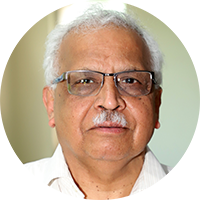
Anurag Sharma
Indian Institute of Technology Delhi, India
For outstanding contributions to optics and photonics teaching, research and leadership and creating India's first dedicated Optics and Photonics Centre at Indian Institute of Technology Delhi
Sharma received his PhD from the Indian Institute of Technology (IIT) Delhi. He has been teaching at IIT Delhi for over 40 years and is currently an Emeritus Professor of Optics and Photonics and Physics. He was an Alexander von Humboldt Fellow at the University of Karlsruhe (now KIT), Germany, a Senior Associate of the Abdus Salam International Centre for Theoretical Physics, Trieste, Italy and a Visiting Professor at the University of Saint-Etienne, France.
His research has been in the area of modeling and analysis of optical waveguides and imaging devices and components, developing several new techniques for propagation of optical rays and waves. In addition to his seminal role in creating the Optics and Photonics Centre at IIT Delhi, Sharma has played a key role in nurturing the Master of Technology (M.Tech.) degree program in Applied Optics.
Sharma received the Excellence in Teaching Award and Lifetime Achievement Award from IIT Delhi. He also received the Shanti Swarup Bhatnagar Prize for his research contributions. He is a Fellow of Optica, the Indian National Science Academy (INSA), the National Academy of Sciences, India INSAI), the Indian Academy of Sciences (IAS), the Indian National Academy of Engineering (INAE), and a Distinguished Fellow of the Optical Society of India (OSI). He is a Past President of the OSI.
Max Born Award
Established in 1982 to honor Max Born, who made distinguished contributions to physics in general and optics in particular, the medal is presented for outstanding contributions to physical optics, theoretical or experimental.

Andrea Alù
City University of New York, USA
For pioneering contributions to linear, nonlinear and nonreciprocal photonic metamaterials
Alù is a Distinguished Professor at CUNY, the Einstein Professor of Physics at the CUNY Graduate Center, and the Founding Director of the Photonics Initiative at the CUNY Advanced Science Research Center. His research interests span over wave optics, metamaterials, applied electromagnetics, nanophotonics, polaritonics and acoustics.
He is a full member of International Union of Radio Science, a Life Fellow of the New York Academy of Sciences, and a Fellow of Optica, the National Academy of Inventors, the American Association for the Advancement of Science, IEEE, the Materials Research Society, SPIE, and the American Physical Society. He has been elected as a Highly Cited Researcher (Clarivate Web of Science) every year since 2017. He has received several additional recognitions for his research activities, including the NSF Alan T. Waterman Award, the SPIE Mozi Award, the IEEE AP-S Distinguished Achievement Award, the Brillouin Medal, the Blavatnik National Award in Physical Sciences and Engineering, the AAAFM Heeger Award, the Dan Maydan Prize in Nanoscience, the Optica Adolph Lomb Medal and the IEEE Kiyo Tomiyasu Award. He has been serving as the Editor in Chief of Optical Materials Express since 2022.
Stephen D. Fantone Distinguished Service Award
Established in 1973 and named in honor of Stephen D. Fantone in 2013, the award is presented to individuals who, over an extended period of time, have served the society in an outstanding way, especially through volunteer participation in its management, operation or planning in such ways as editorship of a periodical, organization of meetings, or other services.

Joseph Mait
USA
For decades of dedicated service and leadership across multiple Optica programs, including introducing innovative programs that support diversity, equity, and inclusion awareness processes for Optica publications and conferences
Mait currently works part-time for the University of Delaware, USA and teaches optics as an adjunct professor at the University of Maryland and the University of Rochester, both in the USA. His research includes surface optical elements, such as diffractive and metamaterial-based elements, graded-index optics, and computational imaging, a field he helped define in the 1990s.
An active and thoughtful leader, Mait has worked tirelessly to help Optica meet the needs of its diverse community. His work on the Member and Education Services Council introduced a new, more accessible dues structure for Society members in developing nations. He helped expand the awards portfolio with the establishment of the Emmett Leith Medal. He has made significant contributions to Optica’s meetings, including the founding of Computational Optical Sensing and Imaging. Among his many roles within the Optica Publication Group, he is a former Editor-in-Chief of Applied Optics, a former Chair of the Publication Council and he chaired the Board of Editors for an unprecedented five years.
He retired in 2018 from the U.S. Army Research Laboratory after 30 years of federal service. As ARL’s Chief Scientist in his last five years, he was responsible for the laboratory’s technical forecasting and strategic vision. He has held visiting positions at the Universität Erlangen-Nürnberg, Germany, the National Defense University in Washington DC, and the Leibniz Institute for Photonic Technologies in Jena, Germany. He is a Fellow of Optica and SPIE, and a life senior member of IEEE.
Michael S. Feld Biophotonics Award
Established in 2012 to honor Michael Feld for his fundamental contributions to applications of photonics technologies to solving biomedical problems. The award recognizes individuals for their innovative and influential contributions to the field of biophotonics, regardless of their career stage.

Zhongping Chen
University of California, Irvine, USA
For pioneering research, development, and clinical translation of Doppler optical coherence tomography (OCT), OCT angiography, OCT elastography, and multimodality intravascular imaging
Chen received his B.S. degree from Shanghai Jiao Tong University, China and his M.S. and Ph.D. degrees from Cornell University, USA. He is currently a Professor of Biomedical Engineering and Director of the F-OCT Laboratory at the University of California, Irvine. He is a co-founder and chairman of the board of directors of OCT Medical Imaging, Inc.
A pioneer in biophotonics, he is recognized for his groundbreaking contributions to the development of Doppler optical coherence tomography (D-OCT) and optical coherence tomography angiography (OCTA). The phase-resolved D-OCT and Doppler variance imaging developed by Chen’s group have been widely used not only as powerful research tools for imaging and quantifying vascular changes in neuroscience and cancer research but also in clinical applications such as ophthalmology. Chen’s research integrates fundamental research, technological development, biomedical studies, and clinical applications. He has made significant impacts in translating numerous optical imaging technologies to clinical applications. These include imaging and diagnosis of laryngeal cancer and neonatal subglottic stenosis, airway injury and lung cancer, oral cancers, obstructive sleep apnea, ocular diseases, cardiovascular diseases, and brain aneurysms. Dr. Chen has authored more than 300 peer-reviewed papers and review articles and holds over 25 patents in the fields of biomaterials, biosensors, and biomedical imaging.
Chen is a Fellow of Optica, the American Institute of Medical and Biological Engineering (AIMBE), and SPIE.
Joseph Fraunhofer Award/Robert M. Burley Prize
Established in 1982 to honor Joseph Fraunhofer for his contributions to the field of optical engineering, the prize was added in 1992 in memory of Robert M. Burley, who exemplified many of the highest attributes of the optical engineer and was the first recipient of the Fraunhofer Award. The award recognizes significant research accomplishments in the field of optical engineering.

Carmen Menoni
Colorado State University, USA
For seminal contributions to the materials aspects and engineering of amorphous oxides for optical coatings of high intensity lasers and gravitational wave detectors
Menoni is University Distinguished Professor in the Departments of Electrical and Computer Engineering and Chemistry at Colorado State University. She obtained her PhD in physics from Colorado State University, USA and shortly after joined the faculty in the Department of Electrical and Computer Engineering at Colorado State University.
Menoni’s group has made recognized contributions to optics in two areas. Her research is pushing the frontiers in dielectric coatings for ultra-high intensity lasers and gravitational wave detectors. This work is supported by fundamental studies of network organization in the amorphous dielectrics and its impact in the optical and structural properties of the thin films. Menoni has also pioneered the use of bright extreme ultraviolet laser beams in novel nanoscale imaging and spectrometry methodologies.
She serves as Director of a recently established Inertial Fusion Energy hub, RISE, supported by the Department of Energy IFE STAR Program, Fusion Energy Science. The RISE hub, a partnership among universities, US national laboratories and industry, provides the framework to investigate innovative laser interaction and target technologies with the goal to accelerate inertial fusion energy and train the workforce that will support its practical implementation.
Menoni has received multiple awards including the IEEE Women in Photonics Excellence Award and the Willis Lamb Award for Laser Science and Quantum Optics. She is a Fellow of Optica, the Institute of Electrical & Electronic Engineers (IEEE), the American Physical Society (APS), the American Association for the Advancement of Science (AAAS) and SPIE. Menoni has served the optics and photonics community through her participation in prominent editorial and governing boards.
Nick Holonyak Jr. Award
Established in 1997 to honor Nick Holonyak Jr., who has made distinguished contributions to the field of optics through the development of semiconductor based light emitting diodes and semiconductor lasers, the award honors significant contributions to optics based on semiconductor-based optical devices and materials, including basic science and technological applications.
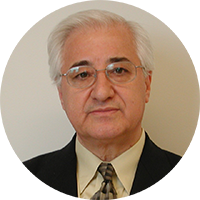
Theodore Moustakas
Boston University, USA
For pioneering contributions to nitride semiconductor materials and optical devices that helped build the foundation for blue and UV LEDs
Moustakas received his PhD from Columbia University, USA. He held research positions at Harvard University and Exxon Research Laboratory prior to joining BU as a Professor of Electrical and Computer Engineering with a joint appointment in the Physics Department. He is currently the BU inaugural Distinguished Professor of Photonics and Optoelectronics.
His research contributions cover a broad spectrum of topics in optoelectronic materials and devices, including nitride semiconductors, amorphous semiconductors, III-V compounds, and diamond thin films. Intellectual property, that resulted from his work in nitride semiconductors, has been licensed to more than 40 companies, including major manufacturers and users of blue / UV LEDs and lasers.
He is a Fellow of Optica, the American Physical Society, the Electrochemical Society, IEEE, and the Materials Research Society; he was also elected a Charter Fellow of the National Academy of Inventors. He was granted an honorary doctoral degree from the Aristotle University, Greece (2003). He received the Molecular Beam Epitaxy Innovator Award from the North America MBE Society, the BU College of Engineering Distinguished Scholar Award, and the Boston University Innovator of the Year Award.
Leonard Mandel Quantum Optics Award
Established in 2023, this award honors Leonard Mandel for his seminal contributions to the field of quantum optics and for advancing our understanding of the quantum aspects of light. It recognizes distinguished contributions to the foundations of statistical and quantum optics, and/or applications in advanced technologies.
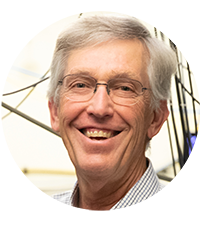
H. Jeff Kimble
California Institute of Technology, USA
For his ground-breaking work on the quantum interactions of light and matter and for establishing the core technologies based on squeezed light for quantum sensing and quantum communications
Kimble received his PhD in physics from the University of Rochester, USA. He was an Assistant, Associate, and Full professor of physics at the University of Texas Austin, USA, before joining the California Institute of Technology, USA faculty. He held the William L Valentine Chair Professorship until 2021 when he became a Professor Emeritus.
Kimble's research areas are quantum optics, quantum metrology, and quantum information science, including the creation of manifestly quantum states of the optical field, and its application to optical interferometry and atomic spectroscopy with measurement sensitivity beyond the standard quantum limit. His scientific legacy is also reflected in his achievement of strong coupling in quantum systems, particularly via the study of cavity quantum electrodynamics.
He has received many academic honors and recognitions, including Doctor Scientiarum Honoris Causa from the University of Copenhagen, Denmark and Honorary Professor from Nanjing University, China. He is a Member of the National Academy of Sciences (NAS), a Fellow of Optica, the American Association for the Advancement of Science and the American Physical Society (APS). Some of his most notable prizes include the Max Born Award, the Herbert Walther Award, the Einstein Prize for Laser Science, the Albert A. Michelson Medal and the Julius Lilienfeld Prize.
Edwin Land Medal
Established in 1992 to honor Edwin H. Land for his unique career as scientist, technologist, industrialist, humanist and public servant, the medal recognizes pioneering work empowered by scientific research to create inventions, technologies, and products. It is jointly presented with the Society for Imaging Science and Technology (IS&T).

Rama Chellappa
Johns Hopkins University, USA
For seminal contributions to the theory and practice of image/video processing and computer vision arenas resulting in inventions, technologies, and systems that have improved the lives of many worldwide
Chellappa received his PhD from Purdue University, USA. He is currently a Bloomberg Distinguished Professor in the Departments of Electrical and Computer Engineering (Whiting School of Engineering) and Biomedical Engineering (School of Medicine) with a secondary appointment in the Department of Computer Science at JHU. At JHU, he is currently the interim co-director of the Data Science and AI Institute and is also affiliated with the Center for Imaging Science (CIS), Center for Language and Speech Processing (CLSP), the Institute for Assured Autonomy (IAA), and the Mathematical Institute for Data Science (MINDS). He also holds a non-tenure position as a College Park Professor in the ECE department at the University of Maryland (UMD). His current research interests are artificial intelligence, computer vision, machine intelligence and signal and image processing.
He served as the Editor-in-Chief of PAMI (IEEE Transactions on Pattern Analysis and Machine Intelligence), a Golden Core Member of the IEEE Computer Society, a Distinguished Lecturer of the IEEE Signal Processing Society, and was the President of the IEEE Biometrics Council. He also co-organized two incubators for Optica.
Chellappa has received many recognitions for research, teaching, innovation, and mentoring of undergraduate students, including the K. S. Fu Prize, IEEE Jack S. Kilby Signal Processing Medal, the Washington Academy of Sciences Distinguished Researcher Award, IBM Faculty Development Awards, the IEEE Biometrics Council inaugural Leadership Award. He was inducted into the National Academy of Engineering and holds nine patents. He is a Fellow of Optica, IEEE, Association for the Advancement of Artificial Intelligence, American Association for the Advancement of Science, Association for Computing Machinery, American Institute for Medical and Biological Engineering, International Association for Pattern Recognition, National Academy of Inventors and the Washington Academy of Sciences.
Sang Soo Lee Award
Established in 2013 to honor Prof. Sang Soo Lee for his pioneering role in establishing optics in the Republic of Korea, the award recognizes outstanding leadership in founding or growing an optics and photonics community. It is co-presented with the Optical Society of Korea (OSK).

Boon S. Ooi
King Abdullah University of Science & Technology, Saudi Arabia
For pioneering the field of optoelectronic devices and systems and growing the optics and photonics community in Saudi Arabia
Ooi has established several national- and international-wide photonic initiatives in Saudi Arabia, secured investments in photonics research, provided training to Saudi engineers and scientists and conducted public outreach to promote optics and photonics education to all levels.
He received his PhD in Electronics & Electrical Engineering from the University of Glasgow, UK. He is currently a Professor of Electrical and Computer Engineering at KAUST. Previously, he was Director of KACST Technology Innovation Center for Solid State Lighting at KAUST. He is a founder of AK-Sens, a technology company focused on commercializing distributed fiber optic sensors for a wide range of applications in the oil and gas, as well as agriculture, industries.
Ooi’s research interests include high-speed optoelectronics and optical wireless communications. To date, he has trained 38 PhD students and 17 postdocs, and placed them in top places in academia, industry, and government all over the world.
An active volunteer, he has served in a variety of roles including Associate Editor of the Optics Express, Senior Editor of the IEEE Photonics Journal, OFC Technical Program Committee, CLEO Technical Program Committee, CLEO-Pacific Rim Co-Chair, Latin America Optics and Photonics Conference Technical Program Committee, and Optica Saudi Student Chapter Faculty Advisor. He is currently the Editor-in-Chief of the IEEE Photonics Technology Letters. He is a Fellow of Optica, IEEE, SPIE, IoP and the US National Academy of Inventors. He has 41 issued US Patents and his other recognitions include the Khalifa International Award, the 2024 Oil and Gas Technical Innovation of the Year Award, the International Date Palm Innovation Prize, and the PIFI Distinguished Scientist Award.
Emmett N. Leith Medal
Established in 2006 to honor Emmett N. Leith, a world-renowned scientist in holography and optical information processing, the medal recognizes seminal contributions to the field of optical information processing.
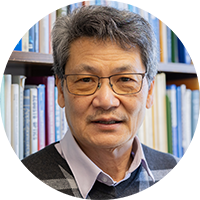
Ting-Chung Poon
Virginia Tech, USA
For seminal contributions to digital holography and optical information processing
Poon received his MS and PhD in Electrical Engineering from the University of Iowa, USA. He is currently a Professor of Electrical and Computer Engineering at Virginia Tech. His research interests include information optics and digital holography.
A leading scientist in the field of optical signal processing, Poon’s contributions reach far beyond the lab through his books and publications, including Optical Scanning Holography with MATLAB (Springer, 2007) and Modern Information Optics with MATLAB (Cambridge University Press and Higher Education Press, China, 2023, co-author Yaping Zhang).
He served as Division Editor of Applied Optics, Associate Editor-in-Chief of Chinese Optics Letters, and is currently Specialty Chief Editor of Frontiers in Photonics, and Editor of Applied Sciences. He was the founding Chair of the Optica Digital Holography and 3-D Imaging (DH) Topical Meeting and served as General Chair of Optica’s Annual Meeting, Frontier in Optics. Poon is a Life Fellow of the IEEE, a Fellow of Optica, SPIE, and the Institute of Physics. His other awards include the Dennis Gabor Award of the SPIE.
Ellis R. Lippincott Award
This award was established in 1975 by Optica (then OSA), the Coblentz Society, and the Society for Applied Spectroscopy (SAS) to honor Ellis R. Lippincott’s unique contributions to the field. It is presented to an individual who has made significant contributions to vibrational spectroscopy as judged by their influence on other scientists. Because innovation was a hallmark of Lippincott's work, this quality must also be demonstrated by candidates for the award.

Steven Boxer
Stanford University, USA
For his development of vibrational Stark spectroscopy as a revolutionary tool to understand molecular interactions at the fundamental level, and for its application in enzyme catalysis to answer the century-old question of how enzymes work
Boxer received his PhD from the University of Chicago, USA. He is the Camille Dreyfus Professor in the Department of Chemistry at Stanford University and is currently Chair of the Chemistry Department.
His research interests are broadly in biophysics: the interface of physical chemistry, biology and engineering. Topics of current interest include: electrostatics and dynamics in proteins, especially related to enzyme catalysis probed using the vibrational Stark effect which was first developed in his lab; excited state dynamics of green fluorescent protein, including split GFP, with applications in biotechnology; electron and energy transfer mechanisms in photosynthesis; and the fabrication of model membranes assemblies to simulate, manipulate and image biological membranes.
Boxer has served on the scientific advisory board of many start-ups in the general area of biotechnology, and as an advisor to government, universities, and non-profit organizations in the USA and around the world. He is the recipient of several awards including the Murray Goodman Memorial Prize, the Biophysical Society Founders Award and the Earle K. Plyler Prize for Molecular Spectroscopy. He is a Fellow of the American Academy of Arts and Sciences, the Biophysical Society, and the National Academy of Sciences.
Adolph Lomb Medal
Established in 1940 to honor Adolph Lomb, the Society’s first treasurer, for his devotion to the Society and the advancement of optics, the medal recognizes noteworthy contributions to optics at an early career stage. Contributions from any area of optics, fundamental or applied, are considered.

Deep Jariwala
University of Pennsylvania, USA
For seminal contributions to nano-optics of low-dimensional semiconductors and development of excitonic meta-materials
Jariwala received his undergraduate degree in Metallurgical Engineering from the Indian Institute of Technology, Banaras Hindu University, India, and his PhD in Materials Science and Engineering from Northwestern University, USA. He is currently an Associate Professor and the Peter & Susanne Armstrong Distinguished Scholar in the Department of Electrical and Systems Engineering at Penn. His research interests broadly lie at the intersection of new materials, surface science and solid-state devices for computing, sensing, opto-electronics and energy harvesting applications. Prior to joining Penn, he worked at Caltech Applied Physics and Materials Science as a Resnick Prize Postdoctoral Fellow.
His research spans novel optical materials and optoelectronics devices. In particular, he focuses on excitonic and low-dimensional semiconductors. Over the past several years, his work at Penn has highlighted unique aspects of light-confinement and formation of hybrid-light matter quasiparticles called exciton-polaritons in layered, atomically-thin, excitonic semiconductors. His contributions have led to realization of excitonic metamaterials as well as atomically-thin, near-perfect, semiconducting absorbers for photovoltaics and photodetectors.
Jariwala has received multiple awards including, the AVS Peter Mark Memorial Award, the IEEE Photonics Society Young Investigator Award, the IEEE Nanotechnology Council Early Career Award, the International Union of Pure and Applied Physics Early Career Scientist Prize in Semiconductors, and the Bell Labs Prize.
Edgar D. Tillyer Award
Established in 1953 to honor of Edgar D. Tillyer’s important contributions to the advancement of better vision and the optical sciences. It is presented to an individual who has performed distinguished work in the field of vision, including (but not limited to) the optics, physiology, anatomy or psychology of the visual system.
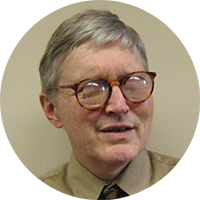
Gordon Legge
University of Minnesota Twin Cities, USA
For revolutionizing the field of low vision research and applying this knowledge to aid and improve reading and mobility in people with low vision
Legge received his master’s in Astronomy and PhD in Experimental Psychology from Harvard University, USA. He also spent a postdoctoral year at the Physiological Laboratory, Cambridge University, UK. He is currently director of the Minnesota Laboratory for Low-Vision Research, a founding member and scientific co-director of the Center for Applied and Translational Sensory Science (CATSS), and Distinguished McKnight University Professor of Psychology and Neuroscience.
His research concerns visual perception with primary emphasis on low vision. His projects focus on the roles of vision in reading and mobility, and the impact of impaired vision on the organization of visual centers in the brain. He addresses these issues with psychophysics, computational modeling, and brain-imaging (fMRI).
He and his colleagues developed the MNREAD Reading-Acuity Chart, which is the gold standard for assessment of reading vision. He served on the NIH National Advisory Eye Council, and was a member of a National Research Council committee involved with the redesign of US currency bills to enhance visual accessibility.
Legge has received multiple awards including a National Institutes of Health MERIT award, the Lighthouse Pisart Vision Award, the Charles F. Prentice Medal Award, the Helen Keller Prize for Vision Research, and the James McKeen Cattell Award. He is a Fellow of the American Association for the Advancement of Science, the Association for Psychological Science, and the Association for Research in Vision and Ophthalmology.
Optica Treasurer's Award
Established in 2016 this award recognizes an Optica staff member who makes significant contributions to organizational excellence, promotes and enacts innovative solutions or exemplifies inspirational leadership.

Nathaniel Jones
Optica, USA
For outstanding dedication to maintaining the Optica headquarters and invaluable support of staff through a variety of projects ranging from meeting set-up to package delivery
Nathaniel Jones joined Optica in 2008 and is currently the Facility Coordinator. Over the years, he has taken on more responsibilities and has become an integral part of our organization. Jones is resourceful and diligent in coordinating facilities support for all aspects of Optica. A well-respected team player, he helps to keep Optica staff on task. During his off-hours, he coordinates domestic and international vacations for his friends, and just as he does when in the office, he's always willing to go above and beyond when asked for help.
R.W. Wood Prize
Established in 1975 to honor the many contributions that R.W. Wood made to optics, the prize recognizes an outstanding discovery, scientific or technical achievement, or invention in the field of optics.

Rick Trebino
Georgia Institute of Technology, USA
For his invention and development of techniques for the ever more complete and rigorous measurement of ultrashort light pulses, which has enabled a wide range of new applications across many fields
Trebino received his PhD from Stanford University, USA. He is currently the Eminent Scholar Chair of Ultrafast Optical Physics at Georgia Tech. Previously, he was at Sandia National Laboratories, USA.
His award-winning research involves developing techniques for measuring light with ever shorter and more complex ultrafast temporal and microscopic spatial variations. He is best known for frequency-resolved optical gating, the first technique—and still the gold standard—for measuring arbitrary ultrashort pulses in time. Trebino’s more recent inventions have extended measurement capability to the complete spatiotemporal electromagnetic field of even highly complex ultrashort pulses. Also, coincidentally, like R.W. Wood, he has investigated scientific self-deception, particularly in pulse measurement. In addition to his research contributions, he is an outstanding educator and freely provides his elegant, entertaining, and fully narrated multimedia entire-course video lectures to the world via his web site to encourage the creation and dissemination of free high-quality video lectures in academia in general.
Trebino has received numerous prizes for his pioneering contributions to optics and physics and education, including the Esther Beller Hoffman Medal. He is a Fellow of Optica, the American Physical Society, the American Association for the Advancement of Science and SPIE.
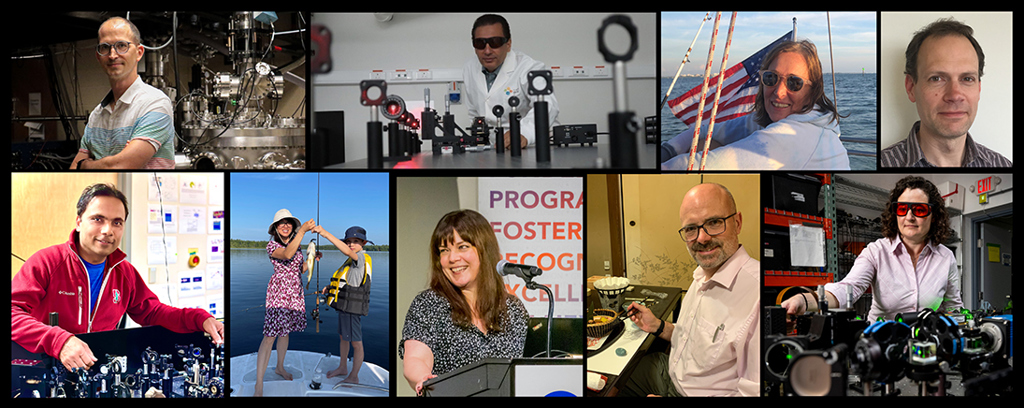
2024 Fellows
Recognizing Optica members who have served with distinction in the advancement of optics and photonics through distinguished contributions to education, research, engineering, business leadership and society. View a complete list of 2024 Fellows.

Michael Chini
Ohio State University, USA
For outstanding contributions to ultrafast optics including generation, characterization, and application of isolated attosecond pulses and few-cycle infrared pulses

Shambhu Ghimire
SLAC National Accelerator Laboratory, USA
For pioneering contributions to strong-field and attosecond physics in condensed matter, including nonperturbative high-harmonic generation from band-insulators and quantum materials

Oliver Graydon
Nature Photonics, Springer Nature, UK
For outstanding support of optics worldwide through scientific publishing leadership and for extensively promoting the importance of photonics to society

Jennifer E. Hastie
University of Strathclyde, UK
For leadership in the photonics and quantum technology community and pioneering technical contributions in the area of narrow-linewidth lasers

Prof Peter G.R. Smith
University of Southampton, UK
For pioneering research and commercialisation in nonlinear optics and Bragg gratings, with applications in quantum science, sensors and optical fabrication
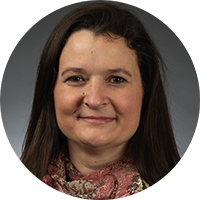
Abbie Watnik
US Naval Research Laboratory, USA
For technical leadership at NRL in imaging through turbulence and scattering media, and for outstanding service to Optica

Winnie Ye
Physical Sciences Inc., USA
For exemplary volunteer leadership and outstanding contributions to silicon photonics research and technology including pioneering investigations in waveguide stress engineering
